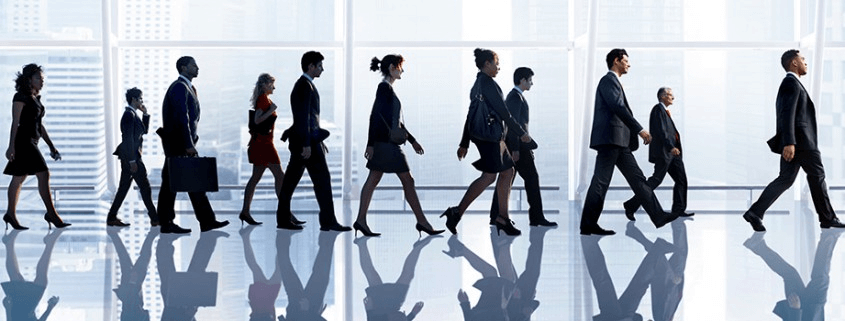While uncertainty reigns amidst the COVID-19 pandemic, it is likely that the workplace will look different when employees return to the office. Workplace teams are considering a variety of strategies to help encourage social-distancing, including lower occupancy capacities on conference rooms, variable office attendance schedules, a return to assigned seating, and others. However, none of these strategies address one key risk to social-distancing: bottlenecks at high-traffic entryways.
A review of thousands of entrance and exit events from Density’s people-count data indicates that employing a 2-second rule at busy doorways can help individuals maintain social distancing when entering and exiting rooms.
The 2-second rule for social-distancing
It is often recommended that motorists on freeways employ the 2-Second Rule in order to keep a safe distance from the vehicle in front of them. The rule recommends that a vehicle be at least 2 seconds behind the vehicle in front to give sufficient time to effectively react to sudden changes in speed to avoid car accidents.

Applying this same rule to people-traffic in an office setting can be similarly helpful. At an average walking speed of 4.4 feet per second (equivalent to 3 MPH), a 2-second gap between colleagues will ensure that they maintain a physical distance of at least 6 feet from each other. This office-based 2-second gap provides a simple rule-of-thumb to help employees be cognizant of, and follow through on managing their pace in the office to comply with social-distancing.
Leveraging people-count data to gauge the 2-second rule
While there are a variety of ways in which workplace managers may deploy this 2-second rule, Density users can apply this standard to their people-count data to identify and address high-risk spaces.
Currently, users can visualize the number of entry events in a space that occur in 15-minute, 1-hour, or 1-day intervals. Identifying spaces and times that violate the 2-second rule (i.e. 1 entrance every 2 seconds) can alert workplaces teams as to where interventions may be needed.

In response to the current COVID-19 Pandemic, Density is soon to release a rate-of-entry metric, measured in # of people per minute, to help workplace managers more precisely target high-risk scenarios. This will allow workplace managers to analyze how rate-of-entry changes throughout the day, as well as compare rate-of-entry metrics across different spaces.
For example, morning time rate-of-entry spikes in an office lobby may suggest that a workplace team should mandate staggered arrival schedules. Similarly, abnormally high rates-of-entries at specific office “neighborhoods”, a section of an office floor whose occupancy is measured by a Density people-count sensor, could indicate traffic bottlenecks that may require similar interventions.
Additionally, comparing rates-of-entry across analogous spaces could help workplace teams pinpoint risky, high-traffic spaces, and take measures to more evenly distribute this traffic. For example, rate-of-entry may indicate that one cafeteria receives risky levels of traffic while another is relatively empty.
In response, the workplace team may consider applying additional mitigation efforts at the high-risk cafeteria, or at least communicating this data to employees so they have the information to use alternative cafeterias/times.
Limits of the 2-second rule standard
People-count data cannot indicate how to employ mitigation efforts at high-traffic entryways. It will be up to workplace teams and their employees to find solutions that work for them.
Leveraging people-count metrics like rate-of-entry can help workplace managers identify high-risk scenarios, and objectively measure the effectiveness of mitigation efforts over time. In this period of historic uncertainty, having hard data to inform and test health and safety strategies may help you respond more quickly and effectively as the pandemic landscape changes.
